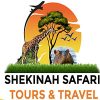Rwenzori mountains national park shelters the Rwenzori Mountains also known as the “mountain of the moon”.it was gazetted as a national park in 1991, got listed as a heritage site by UNESCO in 1994 and as a Ramsar site in 2008 and covers 998 area square km. The park covers districts of Kasese, Bundibugyo, Ntoroko, Bunyangabu, and Kabarole and shares borders with Virunga national park in Congo. Rwenzori’s snow-capped peaks are a wonder given to its location just north of the equator. The exceptionally scenic glacier made it beautiful and gives a profound tour. Glaciers have contributed to the magnificent waterfalls; fast flowing rivers found in this region. it got unique flora species including lobelias, groundsel, and giant heathers among others.
On the Rwenzori massif are 6 mountains some of which are snow-capped and mist-shrouded supporting the myth of the” mountains of the moon “they include. Mount Stanley 5109m, Mount Baker 4843, mount Emin 4797, mount Gessi 4715 mount luigi da savoia 4627.mount Stanley’s peak Margherita get Rwenzori Mountain the third highest mountain in Africa after mountain Kenya and Kilimanjaro.
The Rwenzori Mountains are endowed with a vast biodiversity consisting of unique plant life and fauna. it has a rich and unusual flora composition including many species endemic to the Albertine region and its vegetation covers over 195 tree species. Rwenzori mountain national park boasts of 70 mammals and 217 bird species sheltered by its montane forests at the lower latitude. These animals include endangered red duikers, black. And white colobus monkeys, three-horned chameleon, L’hoests monkeys, and many others. Out of the 217 bird species 19 bird species are endemic to the Albertine region.
Major tour activities include hiking the Rwenzori Mountain, bird watching, and community tours. Rwenzori mountains national park can be accessed by both air and road transport. By road transport, it is a 6-hour drive from Kampala to Kasese which is the nearest town 15kms from the park. by air, all flights are scheduled to kasese airstrip.
Best time to visit Rwenzori mountain national park should be in the dry months when the trails are accessible and less slippery. There are many accommodation facilities around the park and can book your choice.

